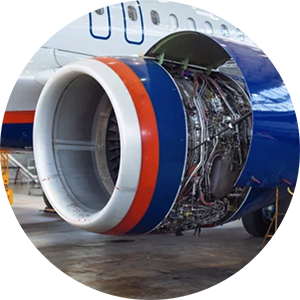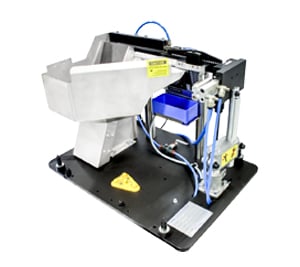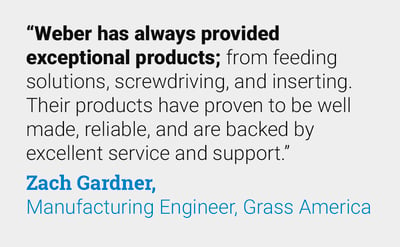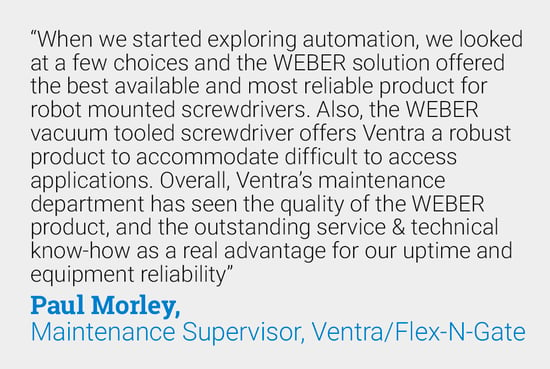4 min read
Error-Proofing Screwdriving and Ensuring Compliance For Aircraft Component Assembly - Part 1
By: Tom Ash Feb 12, 2024 7:30:00 AM

Product liability risks increase rapidly when component assemblies have to operate safely at altitudes above a few thousand feet. The compliance frameworks for aircraft components are strict - with the ultimate factor of safety varying between 1.5 and 1.7 (FOSULT).
This is the first blog of a two-part series discussing the importance of setting up a consistent, repeatable, and controllable automated screwdriving and joining process. In the second blog, we’ll discuss how to error-proof this process and ensure zero failures coming off the line.
The increased loads that aircraft components and assemblies have to handle will cover every aspect of the design. From the frame and fuselage to the powerplant and avionics systems, each screw or fastener must be driven or joined to within precise tolerances.
 Considering that a single Boeing 747-400 has 6 million parts (of which half are fasteners), ensuring each joint complies with the required specification is a critical function for manufacturers. Enforcing a zero-failure philosophy requires in-process validation and the collection of data that demonstrates compliance with these requirements.
Considering that a single Boeing 747-400 has 6 million parts (of which half are fasteners), ensuring each joint complies with the required specification is a critical function for manufacturers. Enforcing a zero-failure philosophy requires in-process validation and the collection of data that demonstrates compliance with these requirements.
Error-proofing your screwdriving operations can help decrease cycle times without increasing product liability. Manufacturers of aircraft component assemblies should consider the following tips when looking to scale up production capacity while remaining compliant with quality requirements.
How to Automate Screwdriving Operations for Aircraft Component Assembly
Increased demand for aircraft parts, components, and assemblies puts immense pressure on manufacturers. To meet delivery schedules and clear lengthy backlogs, manufacturers have to improve productivity with innovative solutions that can handle strict quality requirements. Below, we look at what screwdriving systems today’s aircraft component manufacturers should use to meet these challenges.
Decrease Labor Dependency with Automated Screwdriving
 It’s increasingly difficult to find and retain operators within the manufacturing sector. To reduce dependency on human resources, automated screwdriving is filling the gap for firms that want to grow in the aerospace industry.
It’s increasingly difficult to find and retain operators within the manufacturing sector. To reduce dependency on human resources, automated screwdriving is filling the gap for firms that want to grow in the aerospace industry.
Screwdriving automation provides maximum availability and drastic improvements to productivity. With semi-automated and fully automated screwdriving solutions available from WEBER, you can establish an efficient assembly operation for your aerospace application.
WEBER’s automated screwdriving and feeding systems can:
- Increase throughput with reduced cycle times using Feed While You Drive technology
- Accommodate any kind of screwdriving assembly process that includes driving vertical-up or horizontally
- Reduce downtimes and maximize availability with integrated quick-change features and fully automated feeding and driving of aerospace fasteners
By automating the screwdriving process, you can ensure consistency and repeatability of each joining procedure. WEBER’s automated screwdriving solutions are suitable for specialty aerospace fasteners including:
- Solid Shank Rivets - Commonly used in lightweight applications for structural integrity and made from aluminum alloys with corrosion protection
- Hi-LOK™ - Utilized in structural assemblies where reliability is essential, but alternatives like Hi-LITE™ and Hi-TIQUE™ are becoming more common in aircraft assemblies for improved lightweighting
- TSS Friction Bonding - Honeycomb or carbon fiber panel joining using a thermal setting system (TSS) with threaded inserts to maintain the required loads on a variety of aircraft assemblies
Control Your Screwdriving Operation and Eliminate Errors with Automation Systems from WEBER
Eliminating errors from your screwdriving processes starts with automating the operation, establishing precise control according to the design parameters, and keeping detailed records about each assembly. WEBER enables aircraft component manufacturers to streamline all screwdriving processes for increased throughput, improved quality, and decreased product liability.
In our next blog, we’ll discuss how to implement a Poke-Yoke (error-proofing) process that ensures you have zero failures coming off the assembly line.
To learn more about our automated screwdriving capabilities and how they can help your aircraft assembly operation, download our latest eBook here.







